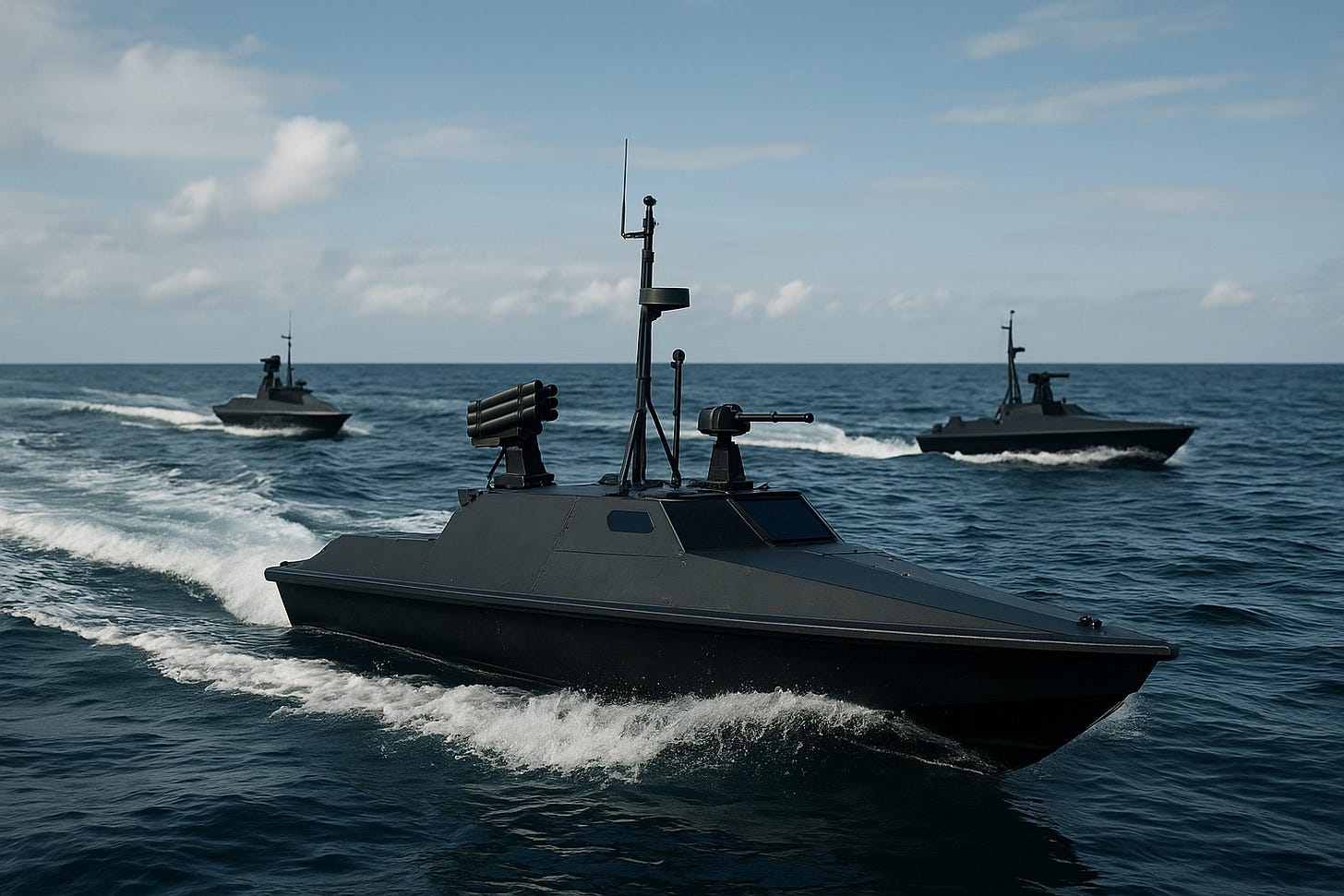Redrawing the Map of Naval Warfare: Ukraine’s Sea Baby Drones
How small, unmanned boats are reshaping the balance of power in the Black Sea and redefining the future of war at sea.
In the Black Sea, a new kind of naval warfare is quietly unfolding. Ukraine’s unmanned surface vessel program, most visibly embodied by the Sea Baby craft built for its Security Service, is changing how nations think about controlling the sea.
Turning the sea into a new front
The Sea Baby drones began as small explosive boats designed to ram into enemy targets. But recent findings suggest that the latest versions can travel over 1,500 kilometers and carry payloads up to 2,000 kilograms. Even more interesting is that new configurations include rocket launchers and automated turrets, transforming Sea Baby drones from disposable craft into reusable, armed vessels.
This evolution matters because Ukraine is using these drones to strike at Russian assets far from its own coast. According to analyses, key Russian ships have already been redeployed away from the Crimean Peninsula in response to these new threats.
How the Sea Baby changes the game
Ukraine’s approach to maritime warfare is shifting. The newest drones can act as modular platforms, carrying rocket pods, machine-gun mounts, or even launching small aerial drones depending on mission needs.
Military planners now talk about deploying “drone squads” — groups of 10 to 20 Sea Babies working together like a small fleet. Reports describe these formations as capable of scouting, attacking, and defending simultaneously, a significant leap in naval flexibility.
The advantages:
Lower cost and risk: Each Sea Baby is cheaper and safer than a crewed ship.
Surprise and flexibility: Their small size and speed make them hard to detect and easy to repurpose.
Strategic pressure: Russia must now invest in drone defenses, diverting attention and money from other fronts.
Ukrainian claims credit these drones with damaging multiple Russian vessels and disrupting Black Sea supply routes.
What’s next in unmanned naval warfare
Ukraine is already a leader in the evolving technology of drone warfare. The Sea Baby project hints at where global naval technology is heading. Three trends are worth watching:
Adoption abroad. Ukraine’s leadership has suggested that Sea Baby designs could be shared or exported in the future, a move that could inspire similar fleets in coastal nations worldwide.
Reusable fleets. The shift from one-way drones to modular, retrievable craft points to a sustainable model for long-term naval operations.
Evolving defenses. Adversaries are racing to adapt, developing sensors, nets, and electronic systems to detect or disable these new threats. Naval architecture itself may evolve, favoring smaller, faster ships built to survive swarms of unmanned attackers.
Why the world should care
For over a century, sea power has meant tonnage: aircraft carriers, cruisers, destroyers. The rise of the Sea Baby challenges that equation. Control of the sea is now about who can combine intelligence, autonomy, and agility.
For Ukraine, these drones are more than weapons; they’re tools of survival and deterrence, allowing strikes far beyond traditional reach. For everyone else, they mark the dawn of a new era in naval warfare.
Ukraine’s Sea Baby drones may be small, but the future of the world’s oceans and future warfare could depend on how nations respond to them.
Thanks for reading Dronefare. Follow us on LinkedIn and subscribe to stay up-to-date on the latest developments in drone warfare.


